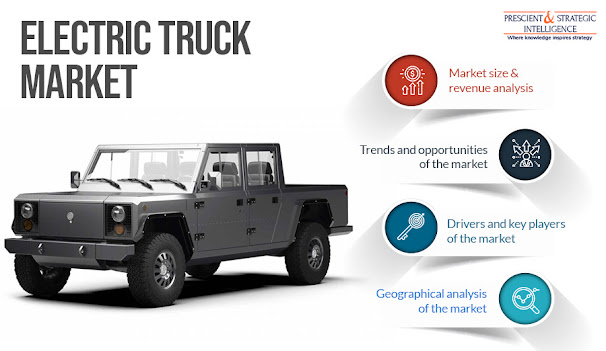Electric Truck Market Set to Flourish in Future
The electric truck market is expanding on account of the low maintenance and operational costs of these automobiles, reducing prices of batteries, and support by governments. These factors would drive the industry at an 18.5% CAGR between 2018 and 2025, at which rate the sales volume in the industry will rise to 1,508.1 thousand units by 2025. Instead of, or in combination with an internal combustion engine (ICE), which is majorly fueled by diesel, these vehicles have an electric motor and battery.
Based on propulsion, the electric truck market divisions are hybrid electric vehicle (HEV), battery electric vehicle (BEV), plug-in hybrid electric vehicle (PHEV), and fuel cell electric vehicle (FCEV). Among these, the highest CAGR during the forecast period will be witnessed by the BEV category, as governments around the world are offering strong manufacturing and purchase support for pure-electric vehicles (EV). This is because BEVs only have a battery and motor, which makes them operationally non-polluting over PHEVs and HEVs.
The categories under the application segment of the electric truck market are municipal, logistics, and others. Among these, the logistics category held the largest share in the industry during the historical period (2013–2017), and the situation till 2025 will be the same. This is owed to the increasing trade activities, which are leading to the rising demand for the transportation of cargo. Within a country, road transport is the cheapest, which is why logistics companies employ large truck fleets. As ICE-based trucks lead to high-volume carbon emissions, logistics companies are shifting to electric variants.
One of the major factor aiding in the advance of the electric truck market is their low operating and maintenance costs. Compared to ICE trucks, electric variants consist of fewer moving parts, which results in a lower risk of breakdown. Additionally, charging a truck’s battery costs way lesser than refueling its diesel tank, as electricity is cheaper than diesel. Moreover, with the increasing production of clean energy, electricity prices are coming down further, which would make electric trucks cheaper to operate and maintain in the long run.
Around the world, governments are implementing stringent emission control regulations, which has made the new-generation of diesel trucks rather expensive. In addition, many countries have imposed a complete ban on vehicles running on fossil fuels in the coming years, which will eventually drive the sale of EVs, including trucks. For instance, in the U.K., no fossil-fuel-driven automobile can be sold from 2040 onward. Such moves have already impelled automakers to add electric trucks to their product portfolio.
The Asia-Pacific (APAC) electric truck market witnessed the highest sales in 2017 because of the strong government support for their production and usage, local laws to have the desired quality of air, and government initiatives to replace conventional automobiles with cleaner alternatives. Additionally, APAC, led by China, is the largest producer of lithium-ion batteries, which results in their easy and cost-effective availability. The high battery prices have made EVs expensive till now, but efforts are on to produce cheaper batteries, at the same time increasing their energy density for a longer driving range.
Hence, government support and emission laws will continue pushing up the sales of electric trucks across the globe.




Comments
Post a Comment